Menus
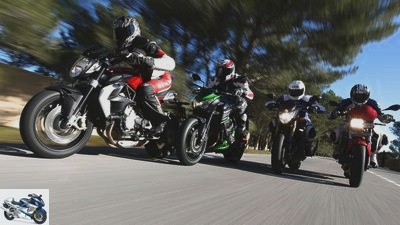
Jahn

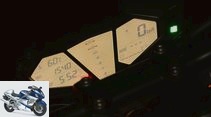
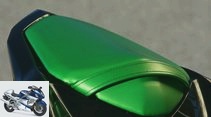
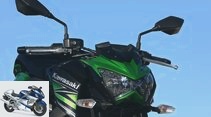
29 photos
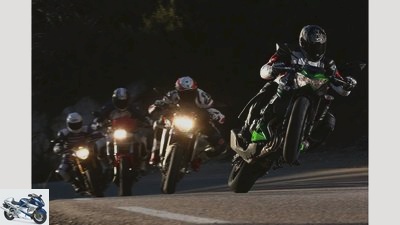
Jahn
1/29
A comparison of four 800 class motorcycles: BMW F 800 R, Kawasaki Z 800, MV Agusta Brutale 800 and Yamaha FZ8.
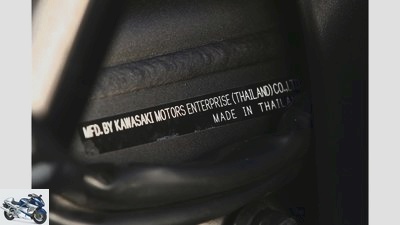
Jahn
2/29
Like Triumph, Kawasaki is now having volume models manufactured in Thailand.

Jahn
3/29
The stylish cockpit of the Kawa provides all the important information including the imprecise remaining range. The central tachometer is difficult to read.
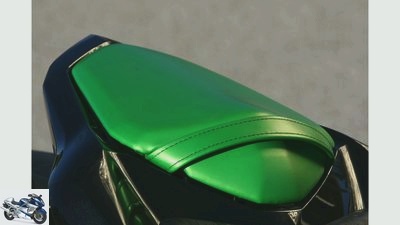
Jahn
4/29
Glows light green and is sensitive to dirt – the upholstery cover of the Kawasaki Z 800.

Jahn
5/29
This gives the Z 800 a fat broadside in the direction of the competition.
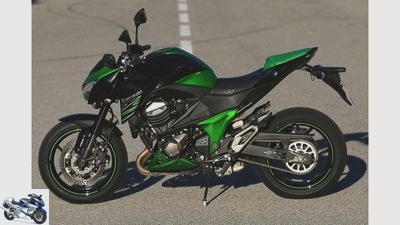
Jahn
6/29
Although new, the Kawa Z 800 looks mature and harmonious.
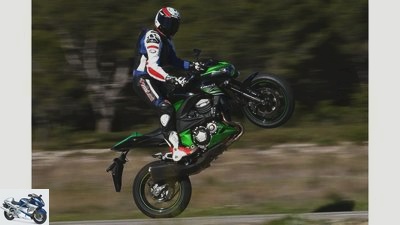
Jahn
7/29
The Kawasaki Z 800 leaves nothing to be desired and does not burn anything. Open the tap and go.

Jahn
8/29
The BMW F 800 R appears stylistically extroverted and shines with pronounced taker qualities.

Jahn
9/29
The "tab" Twin does surprisingly well in comparison.
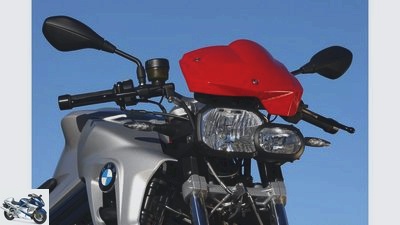
Jahn
10/29
And not because the F 800 R is so good, but because the competitors sometimes have pronounced defects.
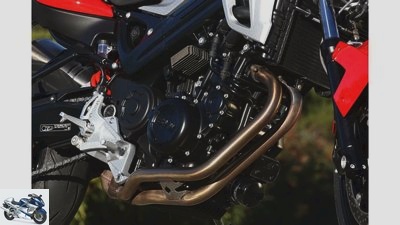
Jahn
11/29
BMW F 800 R: Twin without great character. The 800 is a very inconspicuous and efficient drive.
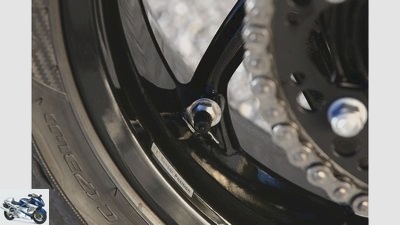
Jahn
12/29
The BMW valves screwed into a spoke inspire every time anew.
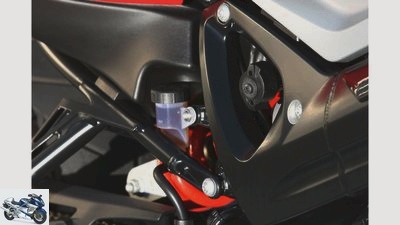
Jahn
13/29
BMW F 800 R: spring preload within reach. You don’t have to break your fingers here.
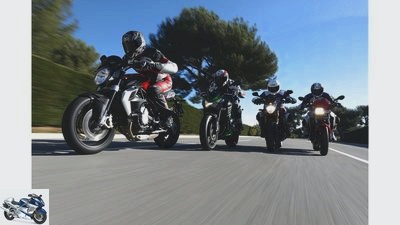
Jahn
14/29
Four motorcycles of the 800 class: BMW F 800 R, Kawasaki Z 800, MV Agusta Brutale 800 and Yamaha FZ8.
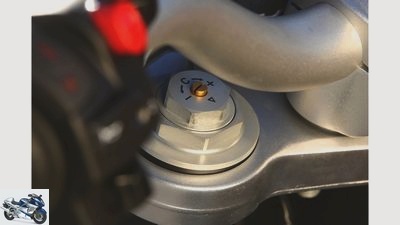
Jahn
15/29
Four 800 class motorcycles: BMW F 800 R, Kawasaki Z 800, MV Agusta Brutale 800 and Yamaha FZ8.
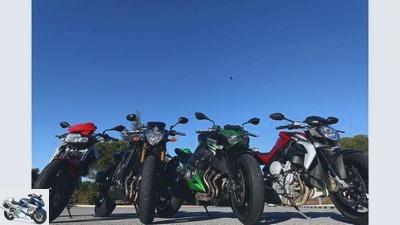
Jahn
16/29
Middle class and gray uniformity? Not in life! Our four test candidates are distinct characters with their own styles and qualities. Diversity is in, not monotony.
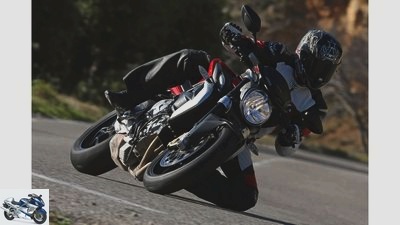
Jahn
17/29
The MV Agusta Brutale 800 lives up to its name – unfortunately! Your engine management is a dangerous thing.
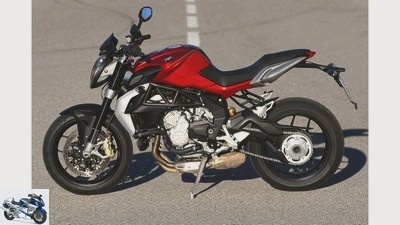
Jahn
18/29
With better engine management, the Brutale 800 would tear everything down in the class.
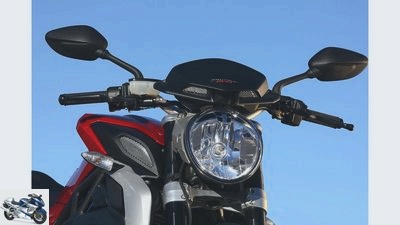
Jahn
19/29
When it comes to braking, for example, the MV Agusta is ahead. Your Brembo stoppers are the most sporty and can do very well without ABS.
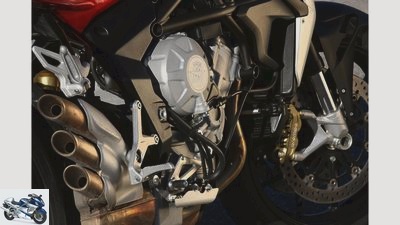
Jahn
20/29
Three cylinders, three tubes. The sound of this combo is heavenly, angry, rousing, turning on. Unfortunately, the triple of the Brutale 800 is not yet satisfactorily tuned, its mapping is a disaster.
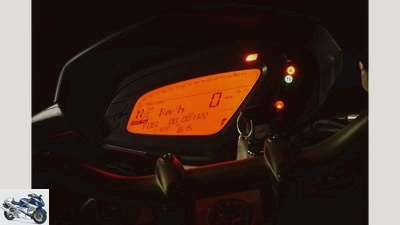
Jahn
21/29
The Brutale is the only mid-range motorcycle tested with fully adjustable suspension elements.
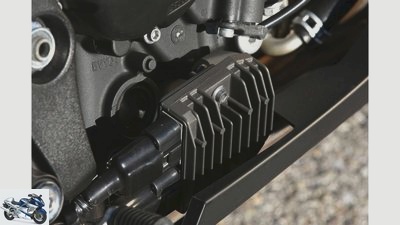
Jahn
22/29
Lack of space? Or why is the rectifier at the Yamaha in front of the oil sight glass?.
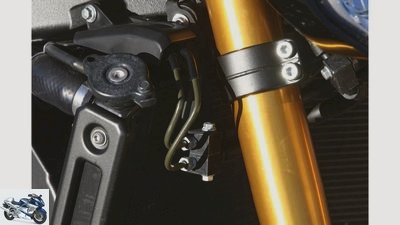
Jahn
23/29
The ABS lines act as if they had been stapled to the FZ8 afterwards.
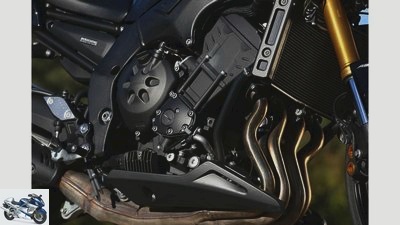
Jahn
24/29
Nice manifolds, nice engine, good styling. The FZ8 has potential that Yamaha unfortunately doesn’t really showcase.
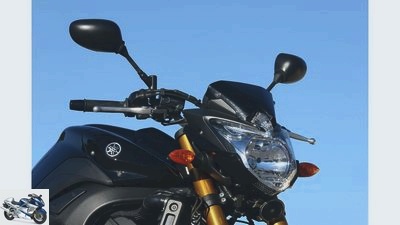
Jahn
25/29
The chassis of the Yamaha FZ8 urgently needs to be sharpened.
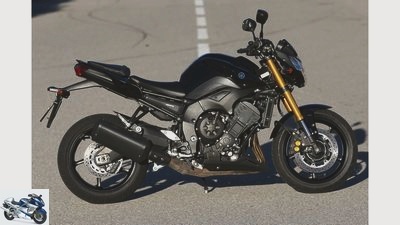
Jahn
26/29
The FZ8 is apparently aimed at drivers without any sporting interest.

Jahn
27/29
Yamaha FZ8: Under full load on the country road, the FZ8 swings, eggs and dances like a pudding on a vibrating plate.
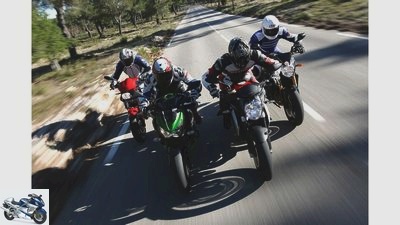
Jahn
28/29
Four 800 class motorcycles: BMW F 800 R, Kawasaki Z 800, MV Agusta Brutale 800 and Yamaha FZ8.
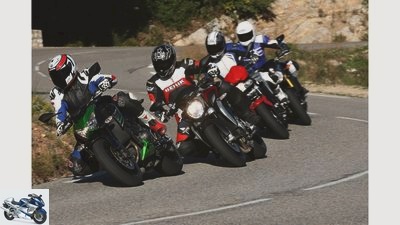
Jahn
29/29
The HP verdict: The Kawasaki Z 800 is clearly ahead. In second place is the BMW F 800 R, which in the picture is already hiding behind the MV Agusta Brutale 800. The Brutale prevents bad engine management from a better rating. The FZ8 brings up the rear. Yamaha fans would certainly be grateful for an R version of the FZ8.
BMW F 800 R, Kawasaki Z 800, MV Agusta Brutale 800 and Yamaha FZ8 in the test
Middle class motorcycles with 800 cc
Content of
The new MV Agusta Brutale 800 and the Kawasaki Z 800 have to compete with the BMW F 800 R and the Yamaha FZ8 in the test. PS checks the pecking order of the class.
Jahn
A comparison of four 800 class motorcycles: BMW F 800 R, Kawasaki Z 800, MV Agusta Brutale 800 and Yamaha FZ8.
Mid-range motorcycles with 800 cubic engines. Even when reading the vehicle category, it rolls up the toenails of sporty motorcyclists. Middle class subconsciously stands for boring, lame carrots, which are driven by students to university and across life or are moved to the authorities and back by stuffy officials. They stand for the egg-laying woolly milk sow, the loyal companion on all days, which are actually just nice descriptions for gray wallflowers on two wheels. The term middle class suggests that middle class is also mediocre. And mediocrity turns off. So the eight hundred people gathered here for the test are gray mice on the fringes of society?
Buy complete article

BMW F 800 R, Kawasaki Z 800, MV Agusta Brutale 800 and Yamaha FZ8 in the test
Middle class motorcycles with 800 cc
Jahn
The Kawasaki Z 800 leaves nothing to be desired and does not burn anything. Open the tap and go.
With the brand new MV Agusta Brutale 800 and the new Kawasaki Z 800 as well as the established sizes BMW F 800 R and Yamaha FZ8, we have four independent representatives of this middle class in front of us. A twin, a triple and two four-cylinder engines work in a steel lattice tube, a steel bridge and two light metal bridge frames. They only agree on the wheel sizes, they have identical wheel and tire sizes at the front and rear. In terms of power, between 94 and 121 hp are available, while the scales oscillate between 186 and 231 kilograms with a full tank. There is also some leeway in terms of price: the most expensive of the gang is the MV Agusta, which is still cheap for MV conditions at 9990 euros. This is followed by the BMW, which is inflated to 9610 euros with a tour package and special accessories (base price 8900 euros) and the Kawasaki at 9495 euros. The price breaker in the group is the FZ8, which is available for 8,850 euros. In fairness it has to be mentioned that the Brutale 800 is the motorcycle with the most extensive equipment. It is the only one to have a fully adjustable chassis, traction control (which only works very moderately), four different mappings of the injection system as well as a lap timer, gear indicator and shift light.
The Yamaha, on the other hand, keeps it simple, true to the motto: What is not on it, does not break. Neither adjustment options on the chassis (with the exception of the spring preload on the shock absorber) nor a gear indicator are available. But an ABS ensures safety in the event of panic braking. BMW and Kawasaki are also better positioned there. ABS is a good thing for them, in addition to the spring preload, at least the rebound damping can be regulated on the struts. And in the cockpits there are one or the other feature, keyword remaining range indicator, that even looks good on large touring motorcycles. Enough of the technical inventory, let’s look at the four units, their different construction methods and thus ultimately unequal characters.
Jahn
The MV Agusta Brutale 800 lives up to its name – unfortunately! Your engine management is a dangerous thing.
Drive works
Anyone who wants to go on fire on the country road needs a fire in the boiler. In our case, a displacement of 800 cubic centimeters is sufficient for hot driving dynamics. Dominant in this area, the MV Agusta. She sprints off like a big one, pulls through like an ox and sweeps the competition off the plate with one arm. From a standstill up to 200 km / h, the powerful Kawasaki takes 3.3 seconds, and the low-performance BMW even 5.1 seconds. It gets just as violent when the Brutale flexes its muscles in the last gear: Then it burns the Z 800 from 50 to 150 km / h for 2.2 seconds. She gives the rather mild Yamaha a full 4.9 seconds and thus half an eternity during this exercise.
But then why doesn’t the Brutale manage to break away from the other three with seven-mile boots on the test track? Because their ingenious engine is very difficult to control, which has several causes and is already noticeable when recording the driving performance. The Brutale is the strongest and lightest motorcycle in the test field and it has the shortest wheelbase. In numbers and in comparison to the Kawasaki it reads like this: 11 hp more power, 45 kilos less mass and a wheelbase that is 65 millimeters shorter. Actually, despite the shorter wheelbase, it should be able to control the Z 800 from the start line over the entire acceleration range. But she can’t. The result of the sprint is acceleration from zero to 100 km / h by 0.2 seconds. Only when the sprint up to 150 km / h does the tide turn, the MV Agusta can implement its performance plus and lower weight and distance the Kawa by 0.3 seconds. The fact that it then lets the green stand for a full 3.3 seconds up to 200 km / h is nice on the autobahn, but unfortunately not relevant on the country road.
How can this half-baked acceleration behavior of the MV Agusta be explained? Cause number one for the trailer up to 100 km / h is in the clutch. The MV coupling must be operated with an iron hand and has only one narrow point of contact. These two facts make it very difficult to get the Brutale into controlled and courageous forward movement from a standing position without falling backwards. The second cause, which manifests itself very drastically in gears one to three on narrow streets, is the sharp increase in performance between 6000 and 7500 rpm. It doesn’t matter whether you’re driving off at a traffic light or sniffing a straight line between two curves. If this speed range is reached in the lower gears, the brutal man turns. Which wouldn’t be bad if there wasn’t a third, highly relevant parameter: the triple’s response to the pilot’s gas commands. Some time ago, Pirelli advertised with the slogan “Power is nothing without control”. The Brutale 800 has to bow to this truth, which has power but hardly allows any control over it. In none of its four different, selectable mappings, the response behavior of the three-cylinder comes even close to being in the range of good drivability. The picture that the MV gives is always the same: First it responds with a delay to the gas command, then it suddenly implements it like a hold-up command, and then reacts with a delay to a further correction.
Would you like an example? The author quickly opened the gas in second gear in a straight line at 50 km / h to get an idea of the power delivery. At first the brutal moved forward quickly, but then jumped violently in the face of the writer, so that he quickly shut the tap again. The closing command was implemented with such a delay that a rollover to the rear could only be avoided by Dusel. Of course, the front wheel hit hard, which not only hit the steering head bearing, but also made the author see stars after he hit the tank with the crown jewels. So there is still a lot to do in terms of engine management at MV Agusta.
Jahn
The BMW F 800 R appears stylistically extroverted and shines with pronounced taker qualities.
Our colleagues prove how it can be done better. The most successful is the tuning of the Z 800, whose heavily revised four-cylinder, derived from the Z 750, must be seen as the reference engine for this category. It responds with minimal delay, but always softly, always provides enough pressure for confident acceleration and thanks to the great, centrally strong torque curve, it can be driven quickly and lazily. The only blemishes of the Zett quad are the quite violent and annoying vibrations between 6000 and 8000 tours and the somewhat sluggish turning ability above 10,000 rpm. Anyone who upshifts quickly with this brand can continue to let their arms stretch out from the green.
Even the BMW as the only twin in the test field – okay, who’s surprising – wants to be driven at a lower speed. The Bavarian two-cylinder is most vital in the area between five and seven on the rev counter, where it gets down to business calmly and sustainably. When there is a lot of heat with the playmates, there is a lack of speed reserves and turning capacity, but the F 800 R cannot be left behind. If you use your unexcited twin in the optimal performance range, you are not only fast, but also economical. With 5.9 liters / 100 km, the F 800 becomes a fuel connoisseur, while the MV comes out as a sip with the same driving style with 7.9 liters / 100 km. With seven liters, the Yamaha is even ahead of the Kawasaki, which approves 7.3 liters / 100 km. And that, although the FZ8 has to be dealt the hardest when the gang of four rages on the highway. The fact that she is fighting for the red lantern with the BMW is not due to the drive. The engine delivers its power very homogeneously and easily dosed on the chain, shines with smooth running and unobtrusive throttle response. It is, so to speak, mother-in-law’s favorite, acts as inconspicuously as the BMW twin and goes perfectly with the Passat estate car character of the FZ8. You could call the Yamaha drive “mediocre”, but that would be unjustifiably punishing. We call it sensible – and with a slightly shorter final translation it would certainly increase in dynamics.
Jahn
Yamaha FZ8: Under full load on the country road, the FZ8 swings, eggs and dances like a pudding on a vibrating plate.
Fahr-Werke
One more look at the points rating is enough and you know that the Yamaha dog is buried elsewhere. In the chassis section, she lost nine points to the BMW, and even 19 points to the Primus Kawasaki! Why? Because she is simply not prepared for the sporty pace. Your setup is fundamentally so soft that brisk to fast locomotion becomes an egg dance. The bike, affectionately known by the testers as the rocking sheep, loses a third of its spring travel just by one person sitting on it. A lack of damping and setting options banish the FZ8 when heating to the audience. If she still wants to play, she has to make sacrifices. In our case, a heavily impacted and now dented muffler and heavily rasped footrests. It does not have to be long explained that with all this gossip a line can hardly be hit. The best thing to do is give the other three the order for the cafe and cruise comfortably behind with the Yamaha.
The Kawasaki shows how it can be done better in series production. Well coordinated, with the option to intervene in the rebound stage, it masters the balancing act between comfort and stability. It burns clean lines on the asphalt, lies full and leaves little to be desired. Well, it could be lighter, then you wouldn’t have to weigh so much in alternating curves. When the MV only hears the word weigh, she laughs herself dappled. No one slams into corners as lightly and playfully as she does. She lacks some feedback from the front wheel and overall some comfort, but who cares when you can turn in the blink of an eye. In the maze of curves, the MV is a force. If her drive could be better controlled, she would be over the mountains before the others had folded the side stand. But if and were not counting what the BMW gets to feel. A tighter fork with more feedback would help her. So you just have to trust the F 800 R, like the boxer models from the same company. If you do that, the houses are quickly dealt with. Selected lines are taken well, and a decent lean angle makes cornering a pleasure.
When it comes to braking, the MV can still score points and make up ground. Your Brembo stoppers are the most sporty and can do very well without ABS. Equivalent, because it is easy to dose and equipped with a late-regulating ABS system, are Kawa and BMW. The ABS of the Z 800 regulates significantly less than that of the BMW, which is due to the tighter tuning of the Kawa fork. The F 800 R locks too often in the braking zone, which activates its anti-lock device unnecessarily often. The Yamaha is a little more restrained, but by no means bad. Sharper brake pads would make the stoppers more snappy, but would also require a stiffer fork. But it should come on the market from March or April 2013 in a slightly revised FZ8 with adjustable chassis.
Jahn
In terms of horsepower, the Kawasaki Z 800 is ahead.
Style works
So, is the middle class now mediocre? After this test we say very clearly: No! Certainly the red pen somehow unites the inexpensive all-rounders – for example in the section on chassis equipment, because the reasonable prices have to come from somewhere. With different drive concepts, independent design directions and different approaches to customer satisfaction, the 800 class delivers a colorful, impressive and multi-layered picture. And Kawasaki and MV Agusta impressively prove that the performance of mid-range motorcycles is not to be laughed at.
PS judgment
1. Kawasaki Z 800
With the Z 800, the Greens are giving a fat broadside in the direction of competitors. Although new, it looks mature and coherent, sits at the top of an exciting and varied test field without any great quirks or fuss.
2. BMW F 800 R
Surprise, the “lax” twin in second place! And not because it is so good, but because the other two competitors have pronounced shortcomings. One stumbles over the landing gear, the other over the engine.
3rd MV Agusta Brutale 800
Lord, give the brutal a better engine management! Then she tears everything down and takes the crown of the class. That leaves her only third place and the stigma of being a dangerous motorcycle at times.
4. Yamaha FZ8
The FZ8 is apparently aimed at drivers without any sporting interest. But for them there is the FZ6, right? Please sharpen the rocking gear, er, undercarriage, then the figure eight really goes forward! Or put on an FZ8 R, the Yamaha fans will thank you.
| BMW F 800 R. | Kawasaki Z 800 | MV Agusta Brutale 800 | Yamaha FZ8 | |
| fork | ||||
| strat. neg. travel | 30 mm | 27 mm | 31 mm | 29 mm |
| Pressure level | – | – | 2 U open | – |
| Rebound | – | 10 K open | 10 U open | – |
| level | default | default | default | default |
| Strut | ||||
| strat. neg. travel | 4 mm | 21 mm | 11 mm | 7mm |
| Pressure level | – | – | 1.75 U open | – |
| Rebound | 1 U open | 0.25 open | 0.25 U open | – |
| level | default | default | default | default |
| Tire pressure | ||||
| Measured cold at the front and rear: 2.3 / 2.5 bar | ||||
All damping settings counted from completely closed; static negative spring deflection standing vertically without driver; U = revolutions; K = clicks.
Measured values and driving performance
Jahn
BMW F 800 R, Kawasaki Z 800, MV Agusta Brutale 800 and Yamaha FZ8.
archive
Performance diagram of the four mid-range motorcycles.
Green is the power! Kawasaki has perfectly revised the engine from the Z 750 for the 800. The beefy middle and the harmonious torque curve make the green four-wheeler a sovereign country road drive. The FZ8 can only pant afterwards. Its rapid increase in torque between 5500 and 6200 tours is not so drastically felt in everyday life. With the MV Agusta, on the other hand, between 5500 and 6000 rpm, the punk is so high that the motorcycle constantly does wheelies up to third gear, which is not always desirable and difficult to control. The BMW twin drives in its own world. It gets down to business most dynamically from 4000 to 6500 rpm. But anyone who thinks that the F 800 R is easy to hang out is wrong.
| Acceleration** | Draft** | Top speed * | ||||
| 0-100 km / h | 0-150 km / h | 0-200 km / h | 50-100 km / h | 100-150 km / h | ||
| BMW F 800 R. | 3.7 s | 7.3 s | 15.8 s | 5.1 s | 5.9 s | 210 km / h |
| Kawasaki Z 800 | 3.3 s | 6.4 s | 14.0 s | 4.9 s | 5.1 s | 230 km / h |
| MV Agusta Brutale 800 | 3.5 s | 6.1 s | 10.7 s | 3.9 s | 3.9 s | 245 km / h |
| Yamaha FZ8 | 3.7 s | 7.2 s | 15.2 s | 5.9 s | 6.8 s | 218 km / h |
* Manufacturer information; ** PS readings
PS data
Jahn
Middle class and gray uniformity? Not in life! Our four test candidates are distinct characters with their own styles and qualities. Diversity is in, not monotony.
BMW F 800 R.
Drive:
Two-cylinder in-line engine, four valves / cylinder, 64 kW (87 PS) at 8000 / min *, 86 Nm at 6000 / min *, 798 cm³, bore / stroke: 82.0 / 75.6 mm, compression ratio: 12.0 : 1, ignition / injection system, 46 mm throttle valves, mechanically operated multi-plate oil bath clutch, six-speed gearbox, G-Kat, chain
Landing gear:
Light alloy bridge frame, steering head angle: 65 degrees, caster: 91 mm, wheelbase: 1520 mm, telescopic fork, inner fork tube diameter: 43 mm. Directly hinged central spring strut, adjustable in spring base and rebound. Suspension travel front / rear: 125/125 mm
Wheels and brakes:
Cast light alloy wheels, 3.50 x 17 / 5.50 x 17, front tires: 120/70 ZR 17, rear: 180/55 ZR 17, first tires: Metzeler Sportec M5, 320 mm double disc brakes with four-piston fixed calipers at the front, 265 mm Single disc with single-piston floating caliper at the rear, ABS
Measurements and weight:
Length / width / height: 2010/880/1240 mm, seat / handlebar height: 795/1115 mm, handlebar width: 725 mm, 205 kg fully fueled, v./h .: 48.7 / 51.3% rear wheel power in the last gear 63.5 kW (86 PS) at 206 km / h
Consumption:
Fuel type: Super unleaded. Average test consumption: 5.9 liters / 100 km, tank capacity 16.0 liters, range: 272 km
Base price:
8900 euros (plus additional costs, tour package 500 euros, tire pressure control 210 euros)
Kawasaki Z 800
Drive:
Four-cylinder in-line engine, four valves / cylinder, 83 kW (113 hp) at 10200 / min *, 83 Nm at 8000 / min *, 806 cm³, bore / stroke: 71.0 / 50.9 mm, compression ratio: 11.9 : 1, ignition / injection system, 34 mm throttle valves, mechanically operated multi-disc oil bath clutch, six-speed gearbox, G-Kat, chain
Landing gear:
Steel bridge frame, steering head angle: 66.0 degrees, caster: 98 mm, wheelbase: 1445 mm, upside-down fork, Ø fork inner tube: 41 mm, adjustable spring base and rebound damping. Central spring strut with deflection, adjustable in spring base and rebound damping. Suspension travel front / rear: 120/137 mm
Wheels and brakes:
Light alloy cast wheels, 3.50 x 17 / 5.50 x 17, front tires: 120/70 ZR 17, rear: 180/55 ZR 17, first tires: Dunlop D 214 “J”, 310 mm double disc brakes with four-piston fixed calipers at the front, 250 -mm single disc with single-piston floating caliper at the rear, ABS
Measurements and weight:
Length / width / height: 2113/830/1300 mm, seat / handlebar height: 820/1020 mm, handlebar width: 725 mm, 231 kg with a full tank, v./h .: 50.4 / 49.6% rear wheel power in the last gear 76 kW (103 PS) at 200 km / h
Consumption:
Fuel type: Super unleaded. Average test consumption: 7.3 liters / 100 km, tank capacity 17 liters, range: 233 km
Base price:
9495 euros (plus additional costs)
MV Agusta Brutale 800
Drive:
Three-cylinder in-line engine, four valves / cylinder, 92 kW (125 PS) at 11600 / min *, 81 Nm at 8600 / min *, 798 cm³, bore / stroke: 79.0 / 54.3 mm, compression ratio: 13.3 : 1, ignition / injection system, 47 mm throttle valves, mechanically operated multi-disc oil bath clutch, six-speed gearbox, G-Kat, chain, traction control
Landing gear:
Steel tubular frame, steering head angle: 66.0 degrees, caster: 95 mm, wheelbase: 1380 mm, upside-down fork, Ø fork inner tube: 43 mm, adjustable spring base, rebound and compression damping. Central spring strut with deflection, adjustable in spring base, rebound and compression. Suspension travel front / rear: 125/125 mm
Wheels and brakes:
Light alloy cast wheels, 3.50 x 17 / 5.50 x 17, front tires: 120/70 ZR 17, rear: 180/55 ZR 17, first tires: Pirelli Diablo Rosso 2 “K”, 320 mm double disc brakes with radially attached four-piston fixed calipers front, 220 mm single disc with two-piston fixed caliper at the rear
Measurements and weight:
Length / width / height: 2080/870/1280 mm, seat / handlebar height: 810/1000 mm, handlebar width: 755 mm, 186 kg fully fueled, v./h .: 51.6 / 48.2% rear wheel power in the last gear 83 kW (113 PS) at 193 km / h
Consumption:
Fuel type: Super unleaded. Average test consumption: 7.9 liters / 100 km, tank capacity 16.6 liters, range: 210 km
Base price:
9990 euros (plus additional costs)
Yamaha FZ8
Drive:
Four-cylinder in-line engine, four valves / cylinder, 78 kW (106 HP) at 10000 / min *, 82 Nm at 8500 / min *, 779 cm³, bore / stroke: 68.0 / 53.6 mm, compression ratio: 12.0 : 1, ignition / injection system, 35 mm throttle valves, mechanically operated multi-disc oil bath clutch, six-speed gearbox, G-Kat, chain
Landing gear:
Light alloy bridge frame, steering head angle: 65.0 degrees, caster: 109 mm, wheelbase: 1460 mm, upside-down fork, Ø fork inner tube: 43 mm. Central spring strut with deflection, adjustable in the spring base. Suspension travel front / rear: 130/130 mm
Wheels and brakes:
Light alloy cast wheels, 3.50 x 17 / 5.50 x 17, front tires: 120/70 ZR 17, rear: 180/55 ZR 17, first tires: Bridgestone BT 21 in “BB”, 310 mm double disc brakes with four-piston fixed calipers at the front, 267 mm single disc with single-piston floating caliper at the rear, ABS
Measurements and weight:
Length / width / height: 2012/840/1270 mm, seat / handlebar height: 805/1005 mm, handlebar width: 695 mm, 216 kg with a full tank, v./h .: 50.4 / 49.6% rear wheel power in the last gear 69 kW (94 PS) at 208 km / h
Consumption:
Fuel type: Super unleaded. Average test consumption: 7.0 liters / 100 km, tank capacity 17.0 liters, range: 243 km
Base price:
8850 euros (plus additional costs)
* Manufacturer information
Related articles
-
Honda CB 1100 and MV Agusta Brutale 1090 in the test
Jahn 35 photos Jahn 1/35 Two bikes, two worlds. We celebrate diversity and feel the sportiness. Jahn 2/35 Ducati Streetfighter. Jahn 3/35 Aprilia Tuono….
-
Comparison test Ducati Monster 821 Stripe, MV Agusta Brutale 800 and Yamaha XSR 900
r-photography.info 45 pictures 1/45 Yamaha XSR 900. 2/45 MV Agusta Brutale 800. 3/45 …
-
Comparison test: KTM Super Duke R against MV Agusta Brutale 990 R
Comparison test: KTM Super Duke R against MV Agusta Brutale 990 R Sporty naked bikes in the test Content of A feast for the senses: The new MV …
-
Comparison test: Honda CB 1000 R, Yamaha FZ1, Triumph Speed Triple, Kawasaki Z 1000
Comparison test: Honda CB 1000 R, Yamaha FZ1, Triumph Speed Triple, Kawasaki Z 1000 Large naked bikes in comparison Contents of …
-
BMW, Honda, Kawasaki, Suzuki and Yamaha super sports cars in a comparison test
Judd 26 pictures Nicolaou 1/26 In the super sports car comparison test: Kawasaki ZX-10R, BMW S 1000 RR, Suzuki GSX-R 1000, Honda Fireblade C-ABS and Yamaha YZF-R1 ….
-
Comparison test: super sports cars under 1000 cubic meters from MV Agusta, Ducati and Kawasaki
Jahn 46 pictures Jahn 1/46 Kawasaki ZX-6R 636 Jahn 2/46 But the Evo is not alone in this. All three bikes rock the ring during the test. Jahn 3/46 ……
-
Jahn comparison test Powercruiser Kawasaki VN 2000, Suzuki Intruder M 1800 R, Yamaha XV 1900 Midnight Star Punchtime Nobody distributes more displacement and …
-
Comparison test: MV Agusta Brutale 1090 RR and Ducati Streetfighter S
fact comparison test: Italian naked bikes, Ducati Streetfighter S, MV Agusta Brutale 1090 RR MV Agusta Brutale 1090 RR and Ducati Streetfighter S …
-
Superbikes put to the test: BMW S 1000 RR, Kawasaki ZX -10 R and MV Agusta F4 RR
fact 18th photos fact 1/18 What counts on the road is all the more important on the Nordschleife: a swelling torque curve and an uncomplicated,…
-
Comparison test: Honda CX 500-650 Turbo, Kawasaki Z 750 Turbo, Suzuki XN 85, Yamaha XJ 650 Turbo
Jahn 21 pictures Jahn 1/21 The preload of the central spring strut of the Suzuki can be easily adjusted. Jahn 2/21 Tight corners and fast …